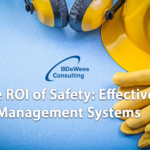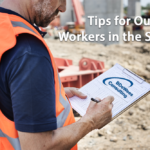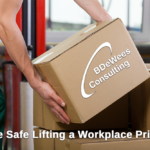Safety
The ROI of Safety: Effective Management System
In virtually every industry, workplace injuries and illnesses occur daily. When occupational injuries and death are looked at annually, on a national level, the cost is staggering. Injury costs are like icebergs. Just as ninety percent of the typical iceberg lurks unseen beneath the surface of the water, surprisingly high unanticipated costs lurk beneath every…
Read MoreSafety for Construction Workers
Since this week is Safety Week, we want to focus on the safety for construction workers. The Mission of Safety Week is to collectively raise the awareness of the construction industry’s continuing commitment to eliminating worker injury, and to clearly communicate its dedication to a shared culture of care and concern and the belief that…
Read MoreTips for Outdoor Workers in the Spring
Spring is here and that means it’s important to be aware of the safety hazards that can affect your employees during this time. Many occupations require employees to be outdoors for at least part of the time. OSHA requires that employees be trained to recognize and avoid all workplace hazards, including those that can occur…
Read MoreHow to Prevent Eye Injuries in the Workplace
It’s easy to get complacent about eyewear when working day-to-day, but not being protected can be more dangerous than you think. The National Institute for Occupational Safety and Health (NIOSH) reports that every day about 2,000 U.S. workers sustain job-related eye injuries that require medical treatment. Ninety percent of on-the-job eye injuries could be avoided if…
Read MoreWorkers’ Compensation and Your Small Business
A workers’ compensation insurance policy provides benefits to employees for injuries and illnesses arising out of and in the course of employment. The policy may provide payment for medical treatment, temporary and permanent disability and death benefits. Workers’ Compensation Insurance is unlike any other type of small business insurance in that it is regulated by…
Read MoreWhy is it Important to Calibrate Test Equipment?
Calibration has been defined by the International Bureau of Weights and Measures as an “Operation that, under specified conditions, in the first step, establishes a relation between the quantity values with measurement uncertainties provided by the measurement standards and corresponding indications with associated measurement uncertainties (of the calibrated instrument or secondary standard) and, in the…
Read MoreIs Your Company Storing Chemicals Safely?
Safe chemical handling requires routine inspections of chemical storage areas and consistent maintenance of your inventory. Even when hazardous materials are out of sight in containers, they should never be out of mind. Here are six ways to help keep your work environment safe when storing hazardous chemicals. Have a plan in place. OSHA’s Occupational…
Read MoreMake Safe Lifting a Workplace Priority
Lifting and carrying material is a common workplace task no matter which industry you are involved in. Improper lifting is dangerous to workers because it can cause strains, sprains, cuts, fractures, bruising and more. Overexertion injuries – which most often occur when a load is being lifted or otherwise handled – account for 22 percent…
Read MoreThe Challenges of New Workers to Stay Safe in the Workplace
Every year, approximately 3 million employees are disabled at work. In 2013, nearly one-third of the nonfatal occupational injuries or illnesses that involved time away from work were suffered by workers with less than one year of service, according to data from the Bureau of Labor Statistics. “Employees in their first month on the…
Read MoreWhy Care About Fall Protection?
Fall Protection has been the most frequently cited OSHA standard for six consecutive years now. According to the US Department of Labor, falls account for 8% of all work-related trauma injuries leading to death. “The Top 10 [frequently cited standards] gives employers a place to start for finding and fixing hazards,” said Patrick Kapust,…
Read More









